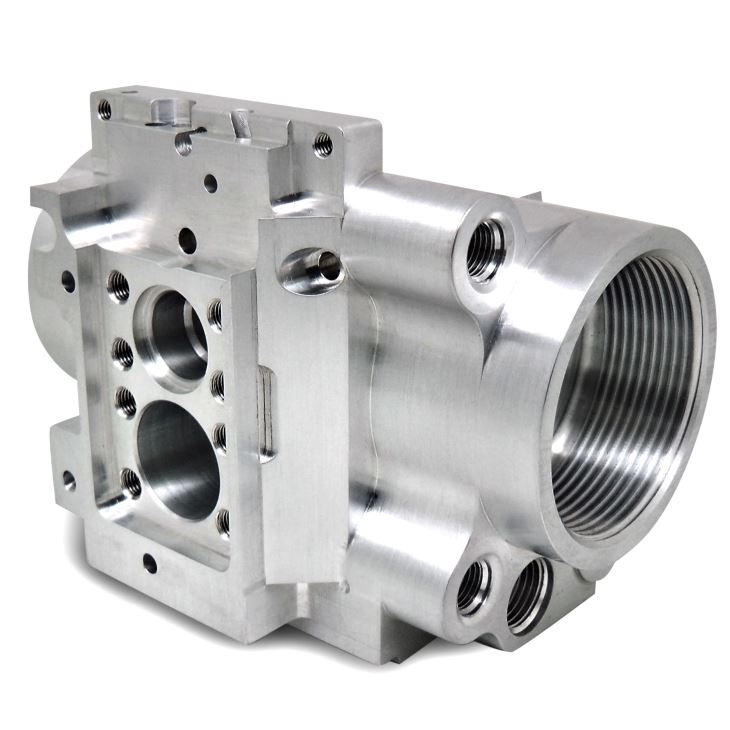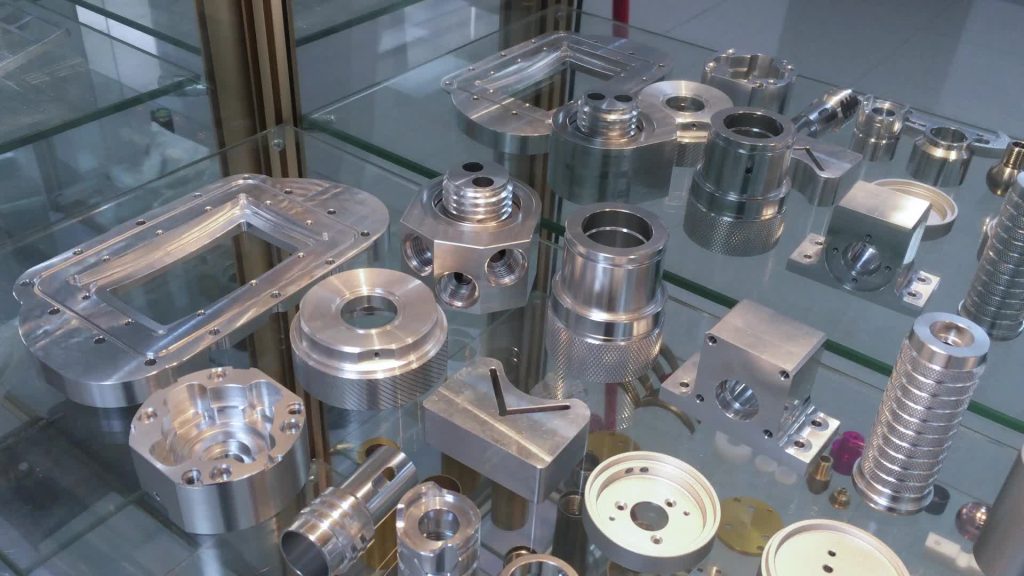Table of Contents:
- Introduction
- Advantages of Magnesium Alloy in CNC Machining
- Challenges of Magnesium Alloy in CNC Machining
- Best Practices for CNC Machining Magnesium Alloy
- Applications of Magnesium Alloy in CNC Machining
- Future of Magnesium Alloy in CNC Machining
- Conclusion
-
1.Introduction:
Magnesium alloys are lightweight materials with excellent strength-to-weight ratio, which makes them desirable for use in various industrial applications. CNC machining, also known as computer numerical control machining, is a highly efficient manufacturing process that involves the use of computer-controlled machine tools to create complex parts and components. In this paper, we will explore the use of magnesium alloy in CNC machining, including its properties, advantages, challenges, and best practices, as well as its potential applications in different industries.
Explanation of Magnesium Alloy and its properties:
Magnesium alloys are mixtures of magnesium with other metals, such as aluminum, zinc, and manganese, to enhance their mechanical properties and corrosion resistance. Magnesium alloys are known for being lightweight, with a density of only two-thirds that of aluminum and one-quarter that of steel, which makes them ideal for weight-sensitive applications. Additionally, magnesium alloys have excellent strength-to-weight ratios, as well as high impact resistance, good thermal conductivity, and good machinability.
Overview of CNC Machining:
CNC machining is a highly automated manufacturing process that produces parts and components by removing material from a block of raw material using computer-controlled tool movement. The process involves the use of a range of cutting tools, such as drills, mills, and lathes, to create complex shapes and geometries accurately. CNC machining is widely used in the aerospace, automotive, medical, and electronics industries, where precision and accuracy are critical. The benefits of CNC machining include high production speeds, reduced labor costs, and excellent repeatability.
-
2.Advantages of Magnesium Alloy in CNC Machining
Magnesium alloys offer several advantages in CNC machining, making them a popular choice for various industrial applications. Some of the advantages of magnesium alloy in CNC machining include:
1.High strength-to-weight ratio: Magnesium alloys are known for their high strength-to-weight ratios, which make them ideal for weight-sensitive applications. This property enables the production of lightweight but sturdy parts and components, which is particularly useful in the aerospace and automotive industries.
2.Excellent machinability: Magnesium alloys have excellent machinability, which means they can be easily cut, drilled, and shaped. This property is critical in CNC machining, where precise and accurate cutting is essential to produce complex parts and components.
3.Reduced tool wear: Magnesium alloys are less abrasive than many other metals, such as aluminum and steel. This property reduces tool wear and extends the life of cutting tools, which reduces production costs and increases efficiency.
4.Dimensional accuracy: Magnesium alloys have excellent dimensional accuracy, which means the parts and components produced have very tight tolerances. This property is particularly important in industries such as aerospace and medical devices, where precision is critical to ensure the safety and reliability of the final product.
-
3.Challenges of Magnesium Alloy in CNC Machining
While magnesium alloys offer several advantages for CNC machining, they also present some challenges that must be addressed to produce high-quality parts and components. These challenges include:
1.Flammability and reactive nature: Magnesium alloys are highly flammable and reactive with oxygen, which means they are a fire hazard in machining. This property requires special handling and safety precautions, including the use of nonsparking tools and adequate cooling during machining to prevent the risk of ignition.
2.Prone to surface corrosion: Magnesium alloys are susceptible to surface corrosion, which can affect the quality and performance of the final product. This property requires careful consideration of the machining parameters, such as cutting speed and coolant type, to minimize surface damage and preserve the integrity of the part.
3.Difficulty in welding: Magnesium alloys are challenging to weld, making it difficult to produce complex parts and components with multiple welds. This property requires innovative welding techniques and specialized equipment to create high-quality welds that meet the necessary strength and durability requirements.
By understanding these challenges and addressing them with the appropriate measures, manufacturers can leverage the advantages of magnesium alloy in CNC machining to produce high-quality parts and components for various industrial applications.
-
4.Best Practices for CNC Machining Magnesium Alloy
To optimize the machining of magnesium alloy and overcome its challenges, manufacturers must follow best practices that address the specific properties of the material. These practices include:
1.Choosing the right cutting tools and parameters: Magnesium alloy requires special cutting tools that can withstand the high temperatures and wear associated with machining this material. Manufacturers should choose tools made of materials such as carbide or diamond-coated, with sharp edges and low tool inclination angles. Additionally, it is crucial to select the right machining parameters such as cutting speed, feed rate, and depth of cut to prevent damage to the workpiece.
2.Controlling chip formation and handling: Magnesium alloy has a tendency to produce long, stringy chips that can wrap around cutting tools and cause tool wear or breakage. Manufacturers should control chip formation by using appropriate cutting parameters and of techniques such as air blast or vacuum systems to remove the chips from the cutting zone. Proper handling of chips is also essential, as these can ignite easily and cause workplace hazards.
3.Preventing surface corrosion: Magnesium alloy is prone to surface corrosion, which can occur during machining due to contact with moisture, chemicals, or heat. To prevent surface corrosion, manufacturers should use appropriate coolant to avoid contact with moisture and provide adequate cooling during machining to prevent overheating. Additionally, using protective coatings can prevent corrosion and ensure the longevity and durability of the final product.
4.Choose V1 Machining:V1 Machining can Provide manufacturing process, metal, and plastic instructions to meet the specific requirements of your CNC machined parts.
By adopting these best practices, manufacturers can optimize the machining of magnesium alloy and produce high-quality parts and components that meet the critical specifications of various industries.

-
5.Applications of Magnesium Alloy in CNC Machining
Magnesium alloys have a wide range of applications in CNC machining due to their unique properties and benefits. The following are the major areas where magnesium alloys are commonly used for CNC machining:
1.Aerospace: Magnesium alloys are lightweight and have excellent strength-to-weight ratio, making them ideal for aerospace applications such as airplane components, helicopter rotor blades, and spacecraft parts. Also, magnesium alloys can withstand high temperatures, making them ideal for applications in spacecraft and missiles.
2.Automotive: Magnesium alloys are used in the automotive industry to produce lightweight and high-performance parts such as engine blocks, suspension parts, and steering columns. By using magnesium alloy, manufacturers are significantly reducing the overall weight of vehicles which results in improved fuel efficiency and lower emissions.
3.Medical Devices: Magnesium alloys’ biocompatibility makes them suitable for use in medical implants such as screws, pins, bone plates, and intravascular stents. Also, their lightweight and machinability make them a preferred material for producing surgical tools and devices.
4.Electronics: Magnesium alloys have good electromagnetic interference shielding, making them ideal for use in electronic enclosures and housings, such as laptops, cellphones, and tablets. Magnesium alloys are also used in the production of mechanical parts of electronic devices, such as heatsinks, connectors, and bearings.
In conclusion, magnesium alloys are versatile materials that offer several benefits and advantages, making them a favorable option for CNC machining in various industrial sectors such as aerospace, automotive, medical devices, and electronics.
-
6.Future of Magnesium Alloy in CNC Machining
The future of magnesium alloy in CNC machining looks bright, with potential for further advancements in manufacturing processes and growing market demand. Here are some of the factors that will shape the future of magnesium alloy in CNC machining:
1.Potential for further advancements in manufacturing processes: With continued research and development, manufacturers can expect further advancements in manufacturing processes that use magnesium alloys for CNC machining. For example, additive manufacturing, also known as 3D printing, is becoming increasingly important in the production of parts and components made of magnesium alloys, since it has the potential to significantly reduce production times and material waste.
2.Growing market demand: The market demand for magnesium alloys is expected to increase due to their unique properties, environmental sustainability, and cost-effectiveness. The increasing use of magnesium alloys in various industrial applications, such as aerospace and automotive, as well as the developing medical devices sector, is expected to drive market growth in the coming years.
3.Advancements in alloys: New alloy compositions that use magnesium are constantly being developed, enhancing the properties and characteristics of this material, such as corrosion resistance, strength and machinability. Such advancements will increase the scope of applications for magnesiam, and further strengthen its potential as a desirable material for CNC machining.
In conclusion, the outlook for magnesium alloy in CNC machining remains favorable, with potential for growth in demand and advancements in manufacturing processes. Magnesium alloys’ wide range of benefits and advantages make it a valuable material for CNC machining and an attractive option for industries seeking cost-effective, lightweight and durable material options.
-
7.Conclusion
In conclusion, magnesium alloys have proven to be a valuable material in CNC machining, offering distinct advantages and facing unique challenges that require special handling and best practices to overcome. Magnesium alloys’ lightweight yet strong characteristics, good machinability, high dimensional accuracy, and biocompatibility properties, make them a preferred material in various industrial applications, including aerospace, automotive, medical devices, and electronics.magnesium alloy in CNC machining offers a promising outlook with a growing market demand and potential for further development, and is expected to continue playing an important role in various high-tech industries that rely on precision and high-quality parts and components.













